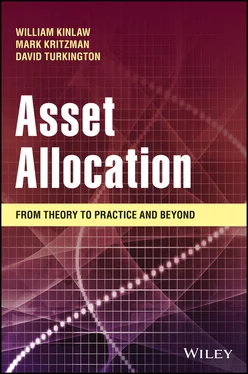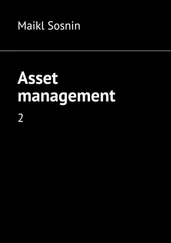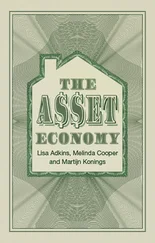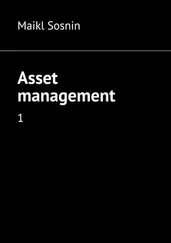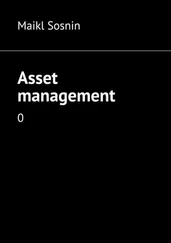1 ...7 8 9 11 12 13 ...18 Investors should be able to commit a meaningful fraction of their portfolios to an asset class without paying excessive transaction costs or substantially impairing a portfolio's liquidity. If it is unusually costly to invest in an asset class, the after-cost improvement to expected utility may be insufficient to warrant inclusion of the asset class. And if the addition of the asset class substantially impairs the portfolio's liquidity, it could become too expensive to maintain the portfolio's optimal weights or to meet cash demands, which again would adversely affect expected utility.
Collectibles such as art, rare books, stamps, and wine may qualify as asset classes for private investors whose wealth is limited to millions of dollars and who do not have liquidity constraints, but for institutional investors such as endowment funds, foundations, pension funds, and sovereign wealth funds, these collectibles have inadequate capacity to absorb a meaningful component of the portfolio. This distinction reveals that the defining characteristics of an asset class may vary, not in kind, but in degree depending on an investor's circumstances.
We believe the following asset classes satisfy the criteria we proposed, at least in principle, though this list is far from exhaustive.
| Cash equivalents |
Foreign developed market equities |
| Commodities |
Foreign emerging market equities |
| Domestic corporate bonds |
Foreign real estate |
| Domestic equities |
Infrastructure |
| Domestic real estate |
Private equity |
| Domestic Treasury bonds |
Timber |
| Foreign bonds |
Treasury Inflation Protected Securities (TIPS) |
The following groupings are often considered asset classes, but in our judgment fail to qualify for the reasons specified. Obviously, this list is not exhaustive. We chose these groupings as illustrative examples.
| Art |
Not accessible in size |
| Global equities |
Not internally homogeneous |
| Hedge funds |
Not internally homogeneous and require selection skill |
| High-yield bonds |
Not externally heterogeneous |
| Inflation |
Not directly investable |
| Intermediate-term bonds |
Not externally heterogeneous |
| Managed futures accounts |
Not internally homogeneous and require selection skill |
| Momentum stocks |
Unstable composition |
Let's focus on hedge funds for a moment, since many investors treat this category as an asset class. Most hedge funds invest across a variety of asset classes; thus, they are not internally homogeneous. Moreover, they comprise actively managed variants of other asset classes, so they are not externally heterogeneous. Finally, it is unlikely that a random selection of hedge funds will improve a portfolio's expected utility. Rather than treating hedge funds as an asset class, investors should think of them as a management style. The decision to allocate to hedge funds, therefore, should be a second-order decision. After determining the optimal allocation to asset classes, investors should next consider whether it is best to access the asset classes by investing in passively managed vehicles, active separately managed accounts, mutual funds, limited partnerships, or hedge funds.
In the next chapter, we describe the conventional approach to determining the optimal allocation to asset classes.
1 Kaplan, S. and Schoar, A. 2005. “Private Equity Performance: Returns, Persistence and Capital Flows,” Journal of Finance, Vol. 60, No. 4.
2 Kinlaw, W., Kritzman, M., and Mao, J. 2015. “The Components of Private Equity Performance,” Journal of Alternative Investments, Vol. 18, No. 2 (Fall).
1 1.See Kaplan and Schoar (2005).
2 2.See Kinlaw, Kritzman, and Mao (2015).
CHAPTER 2 Fundamentals of Asset Allocation
THE FOUNDATION: PORTFOLIO THEORY
E-V Maxim
Asset allocation is one of the most important and difficult challenges investors face, but thanks to Harry Markowitz, we have an elegant and widely accepted theory to guide us. In his classic article, “Portfolio Selection,” Markowitz reasoned that investors should not choose portfolios that maximize expected return, because this criterion by itself ignores the principle of diversification. 1 He proposed that investors should instead consider variances of return, along with expected returns, and choose portfolios that offer the highest expected return for a given level of variance. Markowitz called this rule the E-V maxim.
Markowitz showed that a portfolio's expected return is simply the weighted average of the expected returns of its component asset classes. A portfolio's variance is a more complicated concept, however. It depends on more than just the variances of the component asset classes.
The variance of an individual asset class is a measure of the dispersion of its returns. It is calculated by squaring the difference between each return in a series and the mean return for the series, and then averaging these squared differences. The square root of the variance (the standard deviation) is usually used in practice because it measures dispersion in the same units in which the underlying return is measured.
Variance provides a reasonable gauge of the risk of an asset class, but the average of the variances of two asset classes will not necessarily give a good indication of the risk of a portfolio comprising these two asset classes. The portfolio's risk also depends on the extent to which the two asset classes move together – that is, the extent to which their prices react in like fashion to new information.
To quantify co-movement among security returns, Markowitz applied the statistical concept of covariance. The covariance between two asset classes equals the standard deviation of the first times the standard deviation of the second times the correlation between the two.
The correlation, in this context, measures the association between the returns of two asset classes. It ranges in value from 1 to –1. If the returns of one asset class are higher than its average return when the returns of another asset class are higher than its average return, for example, the correlation coefficient will be positive, somewhere between 0 and 1. Alternatively, if the returns of one asset class are lower than its average return when the returns of another asset class are higher than its average return, then the correlation will be negative.
The correlation, by itself, is an inadequate measure of covariance because it measures only the direction and degree of association between the returns of the asset classes. It does not account for the magnitude of variability in the returns of each asset class. Covariance captures magnitude by multiplying the correlation by the standard deviations of the returns of the asset classes.
Consider, for example, the covariance of an asset class with itself. Obviously, the correlation in this case equals 1. The covariance of an asset class with itself thus equals the standard deviation of its returns squared, which is its variance.
Finally, portfolio variance also depends on the weightings of its constituent asset classes – the proportion of a portfolio's wealth invested in each asset class. The variance of a portfolio consisting of two asset classes equals the variance of the first asset class times its weighting squared plus the variance of the second asset class times its weighting squared plus twice the covariance between the asset classes times the weighting of each asset class. The standard deviation of this portfolio equals the square root of the variance.
Читать дальше
